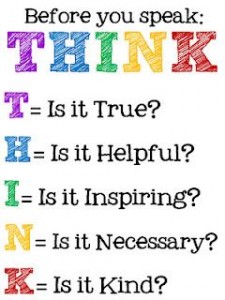I think that a large part of social emotional learning is students learning to take ownership of their emotions and being able to express them. I want to teach my students the importance of expressing themselves through “I statements”. For example, if a student is confused, he or she should say “I do not understand the instructions and I am feeling very lost about how to do this assignment. I would find it helpful if…” By expressing how they feel and giving me feedback, I can identify what the obstacles are and offer the students support. As the students feel like they have my support when they need it, they will become more engaged in the learning process.
To go along with the idea of taking ownership of their emotions and behaviours, I plan on using conflict mediation techniques instead of punishing or reprimanding students. Instead of telling the students what they can and cannot do, I will explain my rationale for instituting my rules in the classroom and give them a chance to voice their expectations and concerns. Using induction instead of coercive discipline helps to build trust and resolve conflicts. Whenever conflicts arise between the students or between a student and me, I will mediate the conflicts in a democratic way in which the students explain why they are acting a certain way and I guide them to help them see how their actions influence others.

This is an article on helping students who may have social anxiety issues. Sometimes, in the chaos of teaching the curriculum and managing the classroom, students with social anxiety can fall through the cracks. I think this article provides some interesting ideas for making sure those students are given the attention they deserve. I would like to try these tips in my own classroom in the future.
http://www.edudemic.com/help-students-overcome-social-anxiety-classroom/